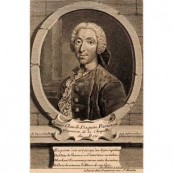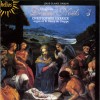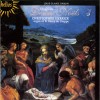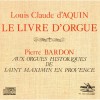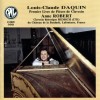传记
Louis-Claude Daquin (or d'Acquin), (July 4, 1694 – June 15, 1772) was a French composer of Jewish birth writing in the Baroque and Galant styles. He was a virtuoso organist and harpsichordist.
ouis-Claude Daquin was born in Paris, to a family originating from Italy (where their name was D'Aquino). One of his great-uncles was a professor of Hebrew at the Collège de France. Daquin was a musical child prodigy. He performed for the court of King Louis XIV at the age of six. He was for a while a pupil of Louis Marchand. At the age of 12, he became organist at the Sainte-Chapelle, and in the following year took a similar post at the church of the Petit St. Antoine.
Claude Daquin never lacked for work as an organist. In 1727 he was appointed organist at the church of St. Paul in Paris, ahead of Jean-Philippe Rameau who was also a candidate. Five years later he succeeded his teacher Louis Marchand as organist at the Église des Cordeliers. In 1739 he became organist to the king. In 1755 he was made titular organist at the cathedral of Notre-Dame de Paris, succeeding Antoine Calvière.
By reputation a dazzling performer at the keyboard, Daquin was courted by the aristocracy and his great expertise at the organ drew large crowds to hear him. He was known for his "unfaltering precision and evenness" at both the harpsichord and organ.
At the age of eight, he conducted his own choral work Beatus Vir.
Daquin's surviving music includes four harpsichord suites, a Nouveau livre de noëls for organ and harpsichord (settings of Christmas pastorals, which include some of his harpsichord improvisations), a cantata, and an air à boire. Among the most famous of his works are the Swiss Noel (Noël Suisse, No. XII of his Nouveau livre), and Le coucou ("The Cuckoo") which is from his 1735 harpsichord suite.
Among technical innovations, his Trois cadences for harpsichord contains a triple trill.





